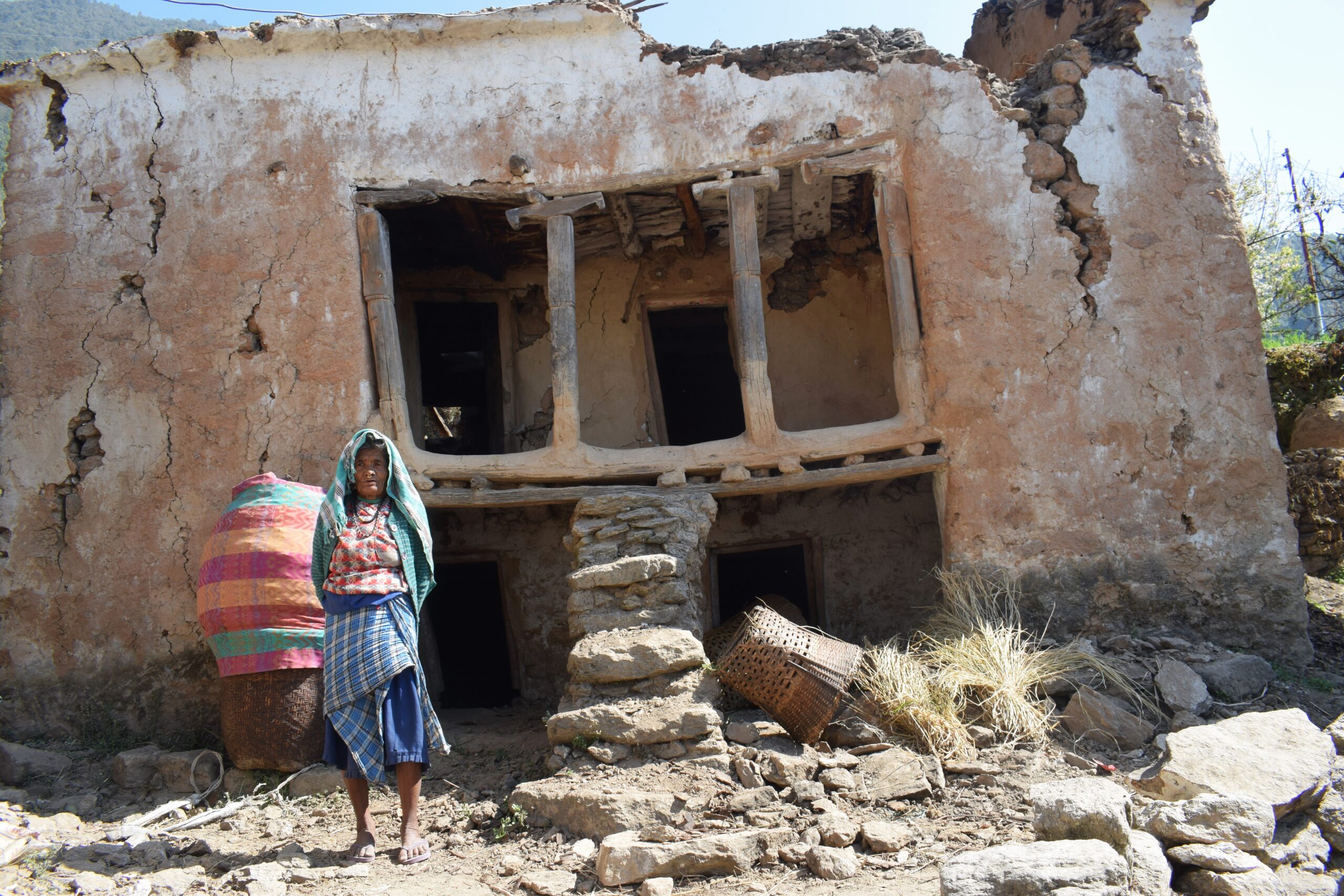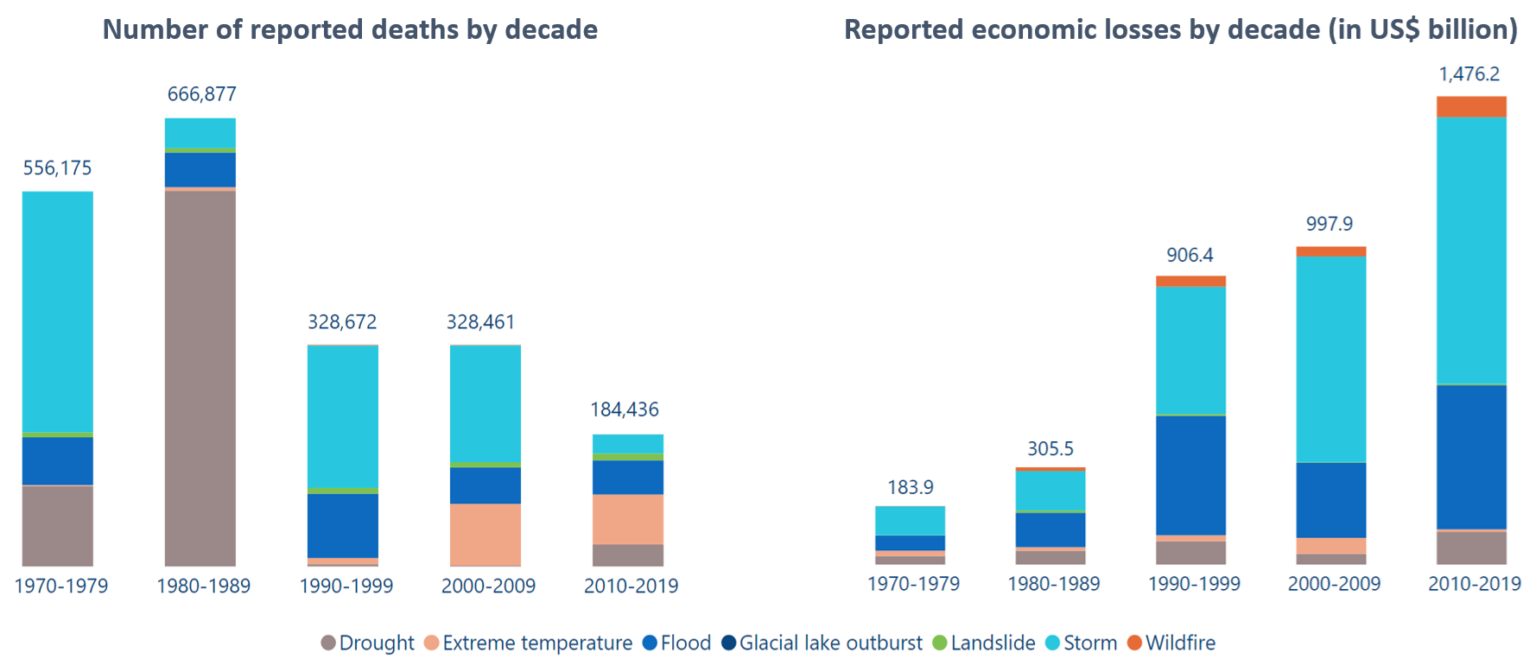Disasters Claim Fewer Lives, But Economic Costs Soar: Insights from 50 Years of WMO Data

Extreme weather, climate and water-related events caused 11,778 reported disasters between 1970 and 2021, according to a new figure from the World Meteorological Organization (WMO). These events resulted in a toll of over 2 million deaths and economic losses amounting to US$ 4.3 trillion.
While economic losses have surged, there has been a notable reduction in human casualties over the last fifty years. This decline can be attributed to enhanced early warning systems and better-coordinated disaster management efforts, the WMO report concludes.
Disproportionate toll: 90% of Disaster Deaths Occur in Developing Countries
The occurrence of extreme weather, climate, and water-related events has been increasing worldwide. The cumulative death toll from all recorded disasters over the past 50 years stands at 2 million, with a staggering 90% of these deaths occurring in developing countries. Data from the Atlas shows that droughts and storms have historically been the most lethal natural hazards, responsible for the highest number of deaths over the 51-year span. However, since the 1990s the number of deaths due to extreme heat has been on the rise.

Reported disasters and related impacts by United Nations country classification. Source: WMO Atlas of Mortality and Economic Losses
Encouragingly, there is a notable positive trend in the reduction of mortality linked to disasters over the past half-century. To illustrate, while the 1990s and early 2000s witnessed around 330,000 reported deaths, this number dropped to 185,000 in the 2010s. This reduction is mostly due to the implementation of multi-hazard early warning systems.
These statistics underscore the vital role of early warning systems in preserving lives. However, only half of countries have early warning systems in place, with coverage especially low in Small Island Developing States (SIDS), Least Developed Countries (LDCs) and in Africa. In this context, a UN initiative Early Warnings For All, jointly led by WMO, IFRC, UNDRR, and ITU, emerged as a crucial effort to ensure that everyone on Earth is protected by early warning systems by the end of 2027.
Economic costs of disasters are on the rise
In contrast, economic losses from disaster, reported around $4.3 trillion, increased during this 51-year period, and there are no signs of decline. 60% of economic losses due to weather-, climate- and water- related disasters were reported for developed economies.
Notably, the USA alone accounted for 39% of economic losses worldwide in the 51 year period. But Least Developed Countries and Small Island Developing States suffered a disproportionately high cost in relation to the size of their economies. Storms and floods are among natural hazards that cause the most economic damage.

American Red Cross volunteer supporting wildfire relief efforts in Ventura County, CA. Photo: Dermot Tatlow/American Red Cross
Disasters hit Asia the Hardest
Asia is the most disaster-prone region in the world, with 30% of globally reported disasters occurring in the region. Between 1970 and 2021, a little over 3,600 disasters were reported in Asia, resulting in almost 985,000 deaths and $1.4 trillion in economic losses. Asia accounted for nearly half of all reported deaths worldwide, with cyclones the leading cause of deaths.
Disaster dynamics across other regions:
Disasters hit Asia the Hardest
When it comes to individual natural hazards, floods have emerged as the foremost global concern, accounting for a significant 45% of all reported disasters worldwide. The highest number of flood-related disasters occurred in Asia, accounting for 31% of all disasters attributed to floods.

Hazards overview. Source: WMO Atlas of Mortality and Economic Losses
In terms of impact, tropical cyclones were the leading cause of both human and economic losses worldwide between 1970 and 2021. Over 780,000 reported deaths were attributed to tropical cyclones during this time frame, constituting 37% of all reported deaths worldwide from various disasters. Just like with floods, Asia bore the brunt of these occurrences, with 38% of tropical cyclones taking place in the region.
Strategic investments in early warnings and disaster preparedness have played a pivotal role in mitigating the impact of both floods and cyclones across Asia. A prime example is Bangladesh, a country particularly vulnerable to disasters, which is regarded as a model for what an effective early warning system looks like. To illustrate, thanks to an effective early warning and early action system, the death toll of Cyclone Amphan in 2020 was reduced to 26. This is in stark contrast to the November 1970 cyclone, which killed approximately 500,000 people in Bangladesh (then East Pakistan), making it one of the deadliest known storms in human history. More recent examples, like Cyclone Sidr in 2007 and Cyclone Aila in 2009, led to approximately 3,400 and 190 fatalities respectively.

Volunteers in Bangladesh's Cyclone Preparedness Programme
This marked decline in mortality underscores the paramount significance of early warning systems and their resounding success. It also reinforces the need to continually extend these systems to vulnerable, hazard-exposed communities globally. Recognizing this positive progress, it becomes clear that paving the way to a safer world, where the impact of disasters is minimized, necessitates ensuring that everyone has access to timely alerts and is able to take early actions.
Written by: Julia Mulchany; Edited by: Vladislav Kavaleuski
